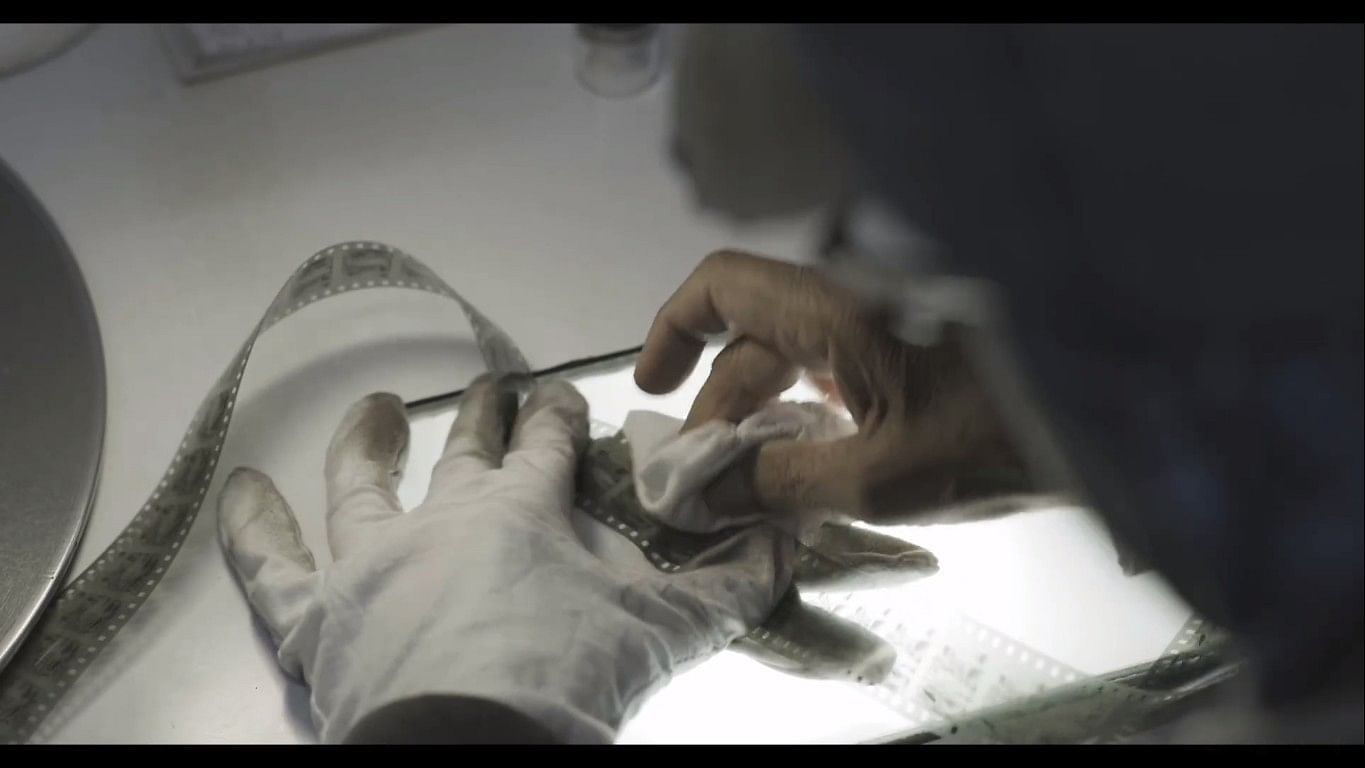
Photo credit: NFAI, Pune
The National Film Archive of India (NFAI) announced the digitisation of 3,500 Indian films across languages in November. The National Film Heritage Mission set up in 2016 by NFAI aims to serve India’s cinematic heritage by preserving and conserving films.
The mission includes film condition assessment and digitisation of 3,500 films, and sound restoration of 2,000 landmark films. It also includes constructing further preservation facilities and organising training programmes.
An official at the recently concluded 54th edition of the International Film Festival of India (IFFI) in Goa said the government has set aside Rs 600 crore for this mission, and filmmakers, producers and owners of old film prints and negatives could approach them for restoration and digitisation.
Reel assessment and storage comes free of cost. Film digitisation and 4K grading will cost Rs 2,216 per minute (Rs 2.66 lakh up to 2 hours). Film restoration along with 4K digitisation will be charged at Rs 22,836 a minute which is Rs 27.40 lakh for a two-hour film.
NFAI has been doing shot-to-shot digitisation so far but under the heritage mission, frame-to-frame digitisation will take place. When films are restored this way, they can also be colour-graded, thus enhancing the quality of the film.
Regional cinema and preservation
Preservation comes much before restoration. In many parts of India, especially regional cinema, the prints are in poor condition because of a lack of preservation facilities. The Karnataka Chalanachitra Academy has a cold storage to preserve negatives, however there is no vault facility. Due to the unstable government in the state, the chairman of the academy is changed every few years. This hasn’t allowed much progress in the restoration and digitisation department of the academy, according to registrar Hemanthraju.
Tedious process
At a press conference about film restoration at 54th IFFI, filmmaker Ketan Anand shared that many film negatives have been lost. With the advent of the digital era, many laboratories were shut. “My negatives were ruined because they shut the machines including dehumidifiers and air conditioners. If the negatives are not kept in AC, they deteriorate. Luckily we digitised many films. So, my films are on a hard disk, not on film anymore,” he said. There was no government support back then so when the production houses shut down, the money was also gone. Many labs threw the material because of lack of payment, says Vaibhav Anand, actor and producer who now runs Navketan Enterprises.
Maintaining the negatives is a tedious process. They have to be cleaned every six months, says Vaibhav. They are also flammable because of the acid used and are prone to vinegar syndrome — a chemical degradation. Dehumidifiers and ACs have to be used continuously. Most producers and studios who could afford their own cold storage have been able to preserve the print and the negatives of their films.
Vaibhav is of the opinion that it is good to preserve the negatives but the shift to digital is much better. It is cost effective — you’re saving on a lot of things including the environment. The digital format does not take up much space, storage won’t be an issue.
Celluloid frames have to be cleaned and repaired by hand before digitising them in high resolution. According to a documentation by NFAI, while digitising ‘Bees Saal Baad’ (1962), some parts and some dialogues were damaged. So they were taken from another element — they were ‘over dubbed’ during the making of the film itself. There is a scene where Waheeda Rahman is talking to her reflection in the river. The dialogue from the river and her dialogue were two different noise profiles and ambience profiles. They had to get it all together to patch it up.
About 1,325 films across languages at NFAI need digital preservation. Among them are Kannada films ‘Putani Agent 1 2 3’, ‘Mooru Darigalu’, ‘Shikari, ‘Nayi Neralu’, ‘Thuthuri’ and ‘Galipata’, among others.